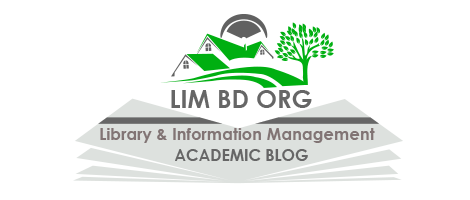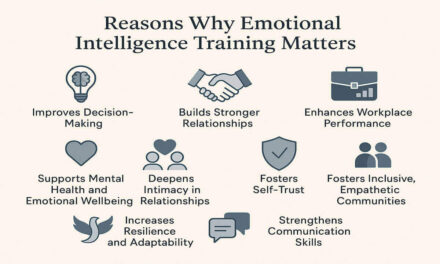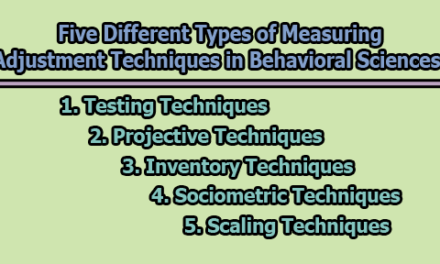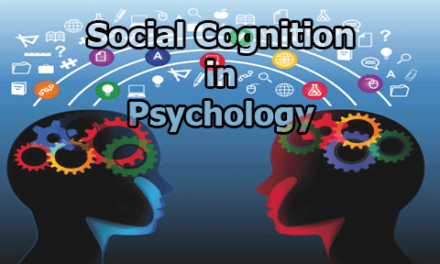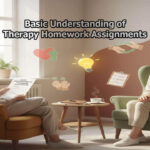Basic Understanding of Writing Therapy:
Writing has always been one of humanity’s most powerful tools for expression and understanding. Beyond its creative or academic use, writing can serve as a deeply personal means of emotional healing. Writing therapy, also known as expressive writing, allows individuals to explore their inner world through words—transforming thoughts and feelings into tangible expressions that foster clarity, insight, and emotional relief. Unlike casual journaling, writing therapy is a more focused and guided process that helps people navigate trauma, anxiety, grief, or everyday stress in a safe and structured way. The beauty of this therapeutic practice lies in its simplicity—no literary skill is required, only honesty, openness, and the willingness to write. Through consistent reflection and expression, writing therapy offers a powerful path toward self-awareness, emotional balance, and psychological healing. In the rest of this article, we will explore the basic understanding of writing therapy.
Understanding Writing Therapy:
Writing therapy, often referred to as journal therapy, is a structured form of expressive writing that aims to promote emotional healing, personal growth, and mental well-being. At its core, it involves using the written word—often through journaling—as a therapeutic tool to process emotions, reflect on experiences, and gain insight into one’s thoughts and behaviors. The act of writing allows individuals to externalize what might otherwise remain unspoken, providing both clarity and emotional release (Adams, n.d.).
Throughout history, poets, authors, and thinkers have acknowledged the cathartic nature of writing. The famous writer Graham Greene (1980) eloquently captured this sentiment when he stated, “Writing is a form of therapy; sometimes I wonder how all those who do not write, compose, or paint can manage to escape the madness, the melancholia, the panic fear which is inherent in the human situation” (p. 9). This timeless observation highlights the profound connection between writing and emotional resilience, illustrating how the act of putting pen to paper can help people navigate the complexities of human emotion.
Although great literature has long hinted at the healing power of writing, it was not until the late 20th century that this concept was formally explored in psychology. James Pennebaker (2017) is widely credited with pioneering the field of writing therapy through his groundbreaking research on expressive writing. His studies demonstrated that writing about emotionally charged experiences—such as trauma or stress—could lead to measurable improvements in both mental and physical health. Participants who engaged in expressive writing exercises often reported reduced anxiety, improved mood, stronger immune function, and a greater sense of personal meaning.
Writing therapy has since evolved into a low-cost, accessible, and versatile form of expressive arts therapy that can be adapted to suit various settings and populations (Adams, n.d.). It can be practiced individually, within a group context, or even integrated into other therapeutic approaches such as cognitive-behavioral therapy (CBT), narrative therapy, or art therapy. In group sessions, participants may share their reflections and discuss themes that emerge through writing, fostering empathy and mutual understanding. This flexibility makes writing therapy an invaluable tool for promoting personal growth, creative expression, and a sense of empowerment and control over one’s life circumstances.
However, it is essential to distinguish between writing therapy and traditional journaling, as the two, while similar, serve different purposes and are guided by distinct methodologies. According to Farooqui (2016), there are three main differences between the two practices:
- Structure and Intent: Journaling is typically a free-form, spontaneous activity in which individuals write about whatever comes to mind. Writing therapy, by contrast, involves specific prompts, themes, or structured exercises—often facilitated by a trained therapist—to target emotional exploration and healing.
- Depth of Reflection: While journaling may focus on recording daily events or surface-level emotions, writing therapy goes deeper by encouraging meta-cognitive reflection—that is, analyzing, interpreting, and making meaning out of one’s experiences, thoughts, and feelings.
- Guidance and Professional Involvement: Journaling is an independent and personal activity. Writing therapy, however, is typically guided by a licensed mental health professional who provides structure, feedback, and support, ensuring that the process remains therapeutic rather than overwhelming.
Although both practices involve writing, their outcomes differ significantly. Traditional journaling can yield benefits such as improved memory, emotional regulation, and relaxation after a long day. Yet, the transformative potential of writing therapy extends much further—it can help individuals confront painful emotions, reconstruct personal narratives, and develop resilience in the face of adversity.
In brief, writing therapy is more than just putting words on a page—it is an intentional, healing dialogue between the writer and their inner world. Through the simple yet profound act of writing, individuals can rediscover meaning, gain emotional clarity, and foster personal transformation.
Benefits of Journal Therapy:
Journal therapy—sometimes called expressive writing—is more than a reflective exercise; it is a scientifically supported therapeutic practice that engages both emotional and cognitive processes to promote healing. Through structured and purposeful writing, individuals can explore deep emotions, confront difficult memories, and reconstruct their personal narratives in ways that enhance mental, emotional, and even physical health. Over the past few decades, a substantial body of research has demonstrated the transformative power of therapeutic writing, showing that it can improve emotional regulation, immune function, and overall psychological well-being.
At the heart of journal therapy lies a simple yet profound principle: writing helps people make sense of their experiences. For individuals who have endured traumatic or highly stressful events, putting their thoughts and emotions into words allows them to externalize pain, gain distance from distressing memories, and process emotions that might otherwise remain unresolved. In clinical and non-clinical settings alike, writing therapy provides a safe and private space where individuals can engage in emotional disclosure without fear of judgment, leading to significant healing outcomes (Baikie & Wilhelm, 2005).
A study conducted by Baikie and Wilhelm (2005), demonstrated the powerful effects of expressive writing on health and well-being. In their research, participants were asked to write for 15 minutes a day over four consecutive days about their most traumatic life experiences. Compared to those who wrote about neutral, non-emotional topics, the expressive writing group showed notable improvements in both physical and psychological health that persisted for up to four months. Participants reported fewer visits to health professionals, reduced symptoms of illness, and better emotional adjustment. These results underscore the idea that writing can serve as a form of “mental detoxification,” helping individuals to process and integrate difficult emotions in a healthy way.
Further evidence comes from a study by Smyth et al. (1999), which tested the same expressive writing technique with over 100 patients suffering from asthma and rheumatoid arthritis. The participants who wrote about the most stressful experiences of their lives experienced significant improvements in health outcomes related to their chronic conditions compared to the control group, which wrote about emotionally neutral topics. Remarkably, the benefits were not merely psychological; measurable improvements were observed in disease-related symptoms and physical functioning. These findings highlight the close link between emotional processing and physical health, suggesting that expressive writing can play a role in psychosomatic healing by reducing physiological stress responses and strengthening immune regulation.
Supporting this connection, Murray (2002) found that expressive writing could lead to improved immune system functioning, as emotional release and cognitive processing appear to reduce internal stress load. However, he noted that for the benefits to persist, consistent writing practice is necessary. Like any form of therapy or self-care, the effects of journal therapy compound over time, helping individuals sustain emotional balance and resilience in the face of new challenges.
Beyond its measurable physiological effects, journal therapy also provides deep psychological benefits that foster self-awareness, growth, and emotional transformation. Murray (2002) emphasized that through consistent therapeutic writing, individuals can:
- Find meaning in their experiences: Writing helps people explore the “why” behind their pain, turning traumatic or confusing events into coherent life narratives. This process of meaning-making enables individuals to integrate difficult experiences into their sense of self, reducing emotional fragmentation.
- View experiences from new perspectives: Expressive writing encourages a shift from being consumed by emotions to observing them with insight and compassion. Over time, this perspective shift fosters acceptance and personal growth.
- Recognize the silver lining in painful events: Writing can uncover hidden strengths, lessons, or positive outcomes that may not have been apparent during moments of distress, promoting emotional resilience.
According to Tartakovsky (2015), one of the unique advantages of journal therapy is its ability to facilitate self-discovery. Through writing, individuals can identify recurring themes, emotional triggers, and thought patterns that shape their behavior. This process deepens self-understanding and allows for conscious change—something that may not emerge as easily through verbal communication alone. The act of writing itself serves as both a mirror and a map: it reflects the inner world while guiding the writer toward clarity and resolution.
A key mechanism underpinning these psychological benefits is cognitive restructuring, a well-established therapeutic technique that involves identifying and challenging distorted or unhelpful thought patterns. Ezawa and Hollon (2023) explain that expressive writing supports this process by helping individuals put their automatic thoughts into words, evaluate their accuracy, and consciously reframe them into more balanced, realistic interpretations. Over time, this can lead to healthier thinking habits, improved emotional regulation, and reduced symptoms of anxiety and depression.
The benefits of journal therapy extend across a wide range of mental health conditions and emotional challenges. According to Farooqui (2016), writing therapy has been found effective for managing and alleviating:
- Post-traumatic stress disorder (PTSD): Writing about traumatic events in a safe, structured way helps individuals process intrusive memories, reduce hyperarousal, and regain a sense of control.
- Anxiety and depression: Expressive writing aids in identifying cognitive distortions, reducing rumination, and promoting emotional release.
- Obsessive-compulsive disorder (OCD): Writing therapy helps individuals externalize obsessive thoughts and reduce compulsive behaviors by fostering mindful awareness.
- Grief and loss: Writing provides a space to express grief, memorialize loved ones, and make sense of loss, aiding the transition toward acceptance.
- Chronic illness and pain management: By expressing frustration and fear related to illness, individuals can reduce stress, improve coping mechanisms, and enhance their overall quality of life.
- Substance abuse and addiction recovery: Writing supports emotional honesty and self-exploration, both of which are critical for sustained recovery.
- Eating disorders: Journal therapy promotes self-compassion and helps challenge distorted body image beliefs.
- Relationship and communication difficulties: Writing fosters self-reflection, empathy, and greater emotional awareness, which can improve interpersonal dynamics.
- Low self-esteem: Through writing exercises that focus on self-affirmation, strengths, and achievements, individuals can rebuild a positive sense of identity and self-worth.
So, journal therapy serves as a holistic healing practice that integrates emotional, cognitive, and physiological processes. It empowers individuals to take an active role in their healing journey, offering both immediate relief and long-term personal growth. Through the simple act of writing, one can process trauma, reshape thought patterns, and rediscover meaning in life’s challenges. The pen, in this context, becomes more than a tool—it becomes a bridge between pain and healing, confusion and clarity, suffering and self-understanding.
Four Different Types of Therapeutic Journaling:
Writing therapy takes on many forms, each designed to nurture emotional expression, promote healing, and enhance self-awareness. While journaling in general can be cathartic, therapeutic journaling refers to specific writing practices grounded in psychological research and emotional processing techniques. These practices are not merely about recording daily events but about using written language as a tool for transformation, reflection, and self-understanding. Among the various approaches, four forms of journaling stand out for their therapeutic value: expressive writing, gratitude journaling, reflective journaling, and trauma-informed writing.
1. Expressive Writing: Expressive writing is one of the most well-researched and influential methods of therapeutic journaling. Developed and popularized by psychologist James Pennebaker, this approach involves writing about traumatic or distressing experiences for 15 to 20 minutes each day over a period of three to five days (Mirgain & Singles, 2016). Unlike traditional journaling, the purpose of expressive writing is not to produce a coherent story or polished piece of writing, but rather to freely express raw, unfiltered emotions surrounding a significant life event.
This technique encourages individuals to explore their deepest thoughts and feelings connected to experiences of pain, loss, or major life transitions. Research has shown that expressive writing helps people organize and make sense of their memories, transforming chaotic emotional experiences into a more structured narrative (Mirgain & Singles, 2016). This process helps in reframing traumatic experiences, facilitating emotional release, and fostering cognitive reappraisal—the ability to reinterpret negative events in a way that promotes healing.
Moreover, expressive writing enables individuals to find meaning in their suffering and recognize their personal growth in the aftermath of adversity. By putting painful emotions into words, the brain can process them more effectively, reducing emotional intensity over time. This can lead to reduced physiological stress, better mood regulation, and greater psychological resilience.
Expressive writing has proven especially beneficial for those coping with post-traumatic stress disorder (PTSD), grief, or chronic emotional distress (Mirgain & Singles, 2016). However, it is important to note that not everyone may benefit equally from this technique. Individuals with severe trauma or unmanaged psychiatric conditions may experience emotional flooding—where re-experiencing traumatic memories becomes overwhelming—so professional guidance is often recommended to ensure emotional safety during the process.
2. Gratitude Journaling: Gratitude journaling is one of the most accessible and uplifting forms of therapeutic writing. This practice involves intentionally writing about things, people, or experiences one is grateful for on a regular basis. Over time, it cultivates a mindset focused on appreciation rather than deficiency, which can significantly improve emotional well-being.
According to experts from the Berkeley Greater Good Science Center (n.d.), gratitude journaling works best when it is specific and reflective rather than superficial. The following evidence-based strategies enhance its effectiveness:
- Be specific: Describe in fact what you’re grateful for and why.
- Go for depth over breadth: Reflect deeply on a few meaningful things rather than making a long list.
- Get personal: Focus on people who have had a positive impact on your life.
- Try subtraction: Think about the challenges you have avoided or the negative events that didn’t occur.
- See good things as gifts: Cultivate the belief that positive experiences are blessings, not entitlements.
- Savor surprises: Include unexpected acts of kindness or moments of joy.
- Aim for variety: Avoid repetition by noticing new details each time you write.
- Write regularly: Make gratitude a habit—daily or at least several times a week.
Regular gratitude journaling has been linked to higher life satisfaction, improved optimism, and lower levels of stress and depression. Neurological studies suggest that practicing gratitude can increase activity in brain regions associated with empathy and reward, reinforcing positive emotional cycles. Most people prefer to engage in gratitude journaling at the end of the day, using it as a reflection tool to appreciate the good moments before resting, but it can be practiced at any time that feels natural.
3. Reflective Journaling: Reflective journaling is a versatile and introspective practice that combines the self-expression of a diary with the critical thinking of personal evaluation. It involves documenting one’s experiences, thoughts, and emotional reactions, then analyzing them to gain insight and understanding (Leftwich, 2019). Unlike expressive writing, which often focuses on specific traumatic events, reflective journaling is continuous and explores everyday experiences with curiosity and purpose.
This method encourages individuals to pause and examine how they think, feel, and behave in various situations. It is widely used in education, counseling, and personal development as a tool for emotional intelligence and self-growth. By reflecting on both positive and negative experiences, individuals can identify recurring patterns, recognize lessons learned, and develop a more mindful approach to future challenges.
To facilitate the reflective process, therapists or educators often provide guiding questions such as (Schroder, n.d.):
- Why did you make a particular decision?
- Was the experience positive or negative, and why?
- What actions were available to you at the time?
- What did you think and feel during and after the experience?
- How did your perspective change afterward?
- What lessons did you learn, and how will you apply them in the future?
Reflective journaling is particularly valuable because it bridges experience with understanding. It promotes metacognition—thinking about one’s own thinking—which can lead to improved emotional regulation, self-awareness, and personal accountability. While it may not replace structured therapeutic writing for trauma or mental illness, reflective journaling is an empowering everyday tool for continuous self-improvement and inner clarity.
4. Trauma-Informed Writing: Trauma-informed writing represents a compassionate and sensitive approach to therapeutic journaling, especially for individuals who have endured trauma. This technique acknowledges that trauma can profoundly affect how a person thinks, feels, and responds to the world. Therefore, writing exercises are conducted with an emphasis on safety, empowerment, and emotional regulation (Kroeker, 2023).
Trauma-informed writing is guided by six key principles identified in trauma-informed care frameworks (Kroeker, 2023):
- Safety: Ensuring the writer feels emotionally and physically secure while writing.
- Transparency and trustworthiness: Building a sense of honesty and predictability in the writing process.
- Peer support: Encouraging connection with others who understand similar experiences.
- Collaboration and mutuality: Viewing the writer as an active partner in their healing journey, not a passive subject.
- Empowerment, voice, and choice: Allowing full autonomy in what, when, and how to write.
- Cultural, historical, and gender awareness: Recognizing that trauma affects people differently based on their identities and experiences.
According to the National Center on Domestic Violence, Trauma, and Mental Health (2014), this form of writing should be approached gradually and gently. The goal is not to re-experience trauma but to create emotional distance and perspective, enabling survivors to process memories safely. Practitioners are encouraged to try trauma-informed writing themselves before introducing it to clients, as it fosters empathy and deeper understanding of its effects.
When done properly, trauma-informed writing can help survivors reclaim their narrative, rebuild self-trust, and cultivate compassion for themselves. It transforms writing from a private act into a healing dialogue with the self, promoting both psychological recovery and empowerment.
Hence, therapeutic journaling takes many shapes, from deeply emotional expressive writing to gratitude-focused reflections, critical self-analysis through reflective journaling, and compassionate self-healing in trauma-informed writing. Each method serves a distinct purpose but shares a common goal: to harness the power of words as instruments of understanding, growth, and healing. By engaging regularly in these forms of journaling, individuals can navigate their inner worlds with greater clarity, resilience, and emotional balance—proving that sometimes, the simplest act of putting pen to paper can be profoundly transformative.
When and How to Use Therapeutic Writing:
Therapeutic writing, when practiced with mindfulness and consistency, can be a life-changing method of self-expression, healing, and emotional processing. For many individuals, the act of writing becomes a bridge between their inner experiences and the outer world—a way to translate complex thoughts and feelings into tangible language. Whether done independently or under professional guidance, writing for therapeutic purposes provides a structured outlet for exploring identity, regulating emotions, and making sense of life’s challenges.
However, the effectiveness of therapeutic writing depends greatly on how it is introduced and practiced. For this reason, clients and individuals are encouraged to follow a few guiding principles that help them establish a safe, meaningful, and sustainable writing habit. These principles can be adapted to each person’s lifestyle, comfort level, and emotional needs.
1. Choosing the Right Format: The first and perhaps most important step is to choose a format that feels natural and accessible. Some people connect best with the tactile process of handwriting in a notebook, while others prefer typing on a computer or even recording their thoughts digitally. There are also numerous online platforms and journaling apps that provide prompts, privacy options, and digital archives of progress over time.
Format flexibility is key. There are no strict rules about what therapeutic writing should look like—it can be a traditional bound journal, a loose-leaf binder, a private online document, or even a password-protected blog. The goal is to create a personal and safe space that invites authenticity. The process should feel comfortable and private enough for the writer to express their innermost thoughts without fear of judgment or exposure.
Encouraging clients to decorate or personalize their writing space—through colors, stickers, drawings, or meaningful symbols—can enhance emotional connection to the process. A journal that feels “theirs” often becomes a safe container for vulnerable emotions. This personalization transforms writing into a ritual, helping individuals associate the act with comfort, safety, and reflection rather than obligation.
2. Setting Clear Intentions: Before beginning, it’s useful to reflect on why one wants to engage in therapeutic writing. This sense of purpose provides emotional direction and motivation. Some individuals write to manage stress or anxiety, while others seek to process trauma, clarify life decisions, or simply connect with their emotions more deeply.
Encouraging clients to write about their intentions as the first journal entry can be profoundly grounding. For example:
- “I want to write to better understand my reactions to stress,” or
- “I’m hoping to process my grief through this writing practice.”
This simple act sets a tone of self-awareness and curiosity, creating a foundation for growth. It can also help the individual return to their purpose later on—especially during emotionally difficult writing sessions.
3. Creating a Consistent Routine: Like other therapeutic practices, writing benefits from consistency and structure. Setting a daily or weekly writing schedule helps the mind prepare for reflection and reinforces writing as a healthy habit rather than a spontaneous outlet. Individuals may start small—perhaps 10 to 15 minutes a day—and gradually extend their writing sessions as comfort grows.
Choosing a specific time and place also matters. Some prefer to write in the quiet of early morning, setting intentions for the day, while others find that evening reflection provides closure and release. The key is to find a rhythm that fits one’s natural energy cycle. Writing in a familiar, quiet, and private space—perhaps by a window, at a favorite desk, or outdoors—can make the process more meditative and immersive.
Routine writing not only deepens introspection but also strengthens emotional regulation skills. The more regularly one writes, the more easily they begin to notice patterns in thought and behavior. Over time, this heightened self-awareness can lead to emotional stability and insight.
4. Applying the WRITE Method (Adams, n.d.): To help beginners and clients navigate therapeutic writing more effectively, Adams (n.d.) developed the WRITE method—a simple, step-by-step approach that combines structure with emotional freedom. Each component of this acronym offers a gentle guide for meaningful expression:
W – What do you want to write about? Identify the focus of your writing. It could be a recent event, a recurring thought, an emotion you want to understand, or a life situation causing distress. The topic can be as specific as “a conversation that upset me” or as broad as “why I feel disconnected lately.” The point is to choose something emotionally relevant.
R – Review or reflect on your topic: Before writing, take a few moments to sit quietly. Breathe deeply and allow yourself to feel the emotion connected to your chosen topic. Reflection prepares your mind to write authentically rather than analytically, and it allows hidden emotions to surface safely.
I – Investigate your thoughts and feelings: Begin writing continuously without worrying about spelling, grammar, or structure. Let your mind flow freely—this process is sometimes referred to as “stream-of-consciousness” writing. The goal is not polished expression but emotional release and exploration. Often, insights emerge naturally once the inner critic is silenced.
T – Time yourself: Set a timer for 5 to 15 minutes and commit to writing without stopping. The time limit helps maintain focus and prevents overthinking. Short, regular sessions are more effective than infrequent, lengthy ones.
E – Exit smart: Once finished, read what you have written and summarize your thoughts in one or two sentences. This helps consolidate your emotional insights and gives closure to the writing session. Some people use this “exit reflection” to set intentions for the next entry or identify a takeaway, such as:
- “I realized I’m still angry, but I understand why now,” or
- “I noticed I tend to blame myself even when I’m not at fault.”
This method balances structure and spontaneity, making it ideal for both beginners and experienced writers. It provides a sense of safety while allowing full emotional expression, which is essential for healing work.
5. Mindset for Effective Journaling (Howes, 2011): While structured methods like WRITE provide a helpful foundation, it’s equally important to cultivate the right mindset. According to Howes (2011), many people avoid therapeutic writing because they worry about “doing it wrong.” These worries can block emotional flow and prevent meaningful reflection. To counter this, Howes suggests three key reminders:
- Don’t worry about what to write about: The simple act of showing up to write is often more powerful than waiting for the “perfect topic.” Even if you write about not knowing what to write, you’re still engaging in self-expression—and that itself can lead to discovery.
- Don’t worry about how well you write: Therapeutic writing is not an English essay; it’s a private emotional process. The goal is authenticity, not artistry. Spelling mistakes, fragmented sentences, or rambling thoughts are all part of the experience. Writing freely allows the subconscious to surface in a way structured conversation sometimes cannot.
- Remember that no one else needs to read what you’ve written: Keeping the writing private removes performance pressure and invites vulnerability. Knowing that no one will judge your words fosters honesty and courage—two crucial elements of healing through writing.
These principles help create a psychologically safe environment, which is vital for therapeutic work. When clients understand that there is no right or wrong way to express themselves, they become more open to confronting difficult emotions and developing self-compassion.
6. Integrating Therapeutic Writing Into Life: Therapeutic writing works best when it becomes part of a person’s broader wellness practice. Some people combine journaling with mindfulness, meditation, or therapy sessions. For example, a client might write after a therapy session to process insights or record emotional changes. Others may use journaling to prepare for counseling, identifying what they want to discuss in future sessions.
Additionally, writing can be integrated into creative arts therapies, group reflection activities, or even team-building programs that promote emotional intelligence and empathy. In each context, the practice strengthens emotional literacy—the ability to name, understand, and manage emotions effectively.
7. Concluding Thoughts: Therapeutic writing offers a pathway to self-discovery that is both deeply personal and profoundly empowering. By following a few simple yet powerful guidelines—choosing a format that feels safe, setting clear intentions, creating a consistent routine, applying the WRITE method (Adams, n.d.), and embracing the nonjudgmental mindset outlined by Howes (2011)—anyone can begin to unlock the psychological and emotional benefits of writing.
Ultimately, this practice reminds us that healing does not always require external validation or elaborate techniques. Sometimes, all it takes is a quiet moment, a blank page, and the courage to listen to oneself. Through consistent reflection, the written word becomes more than ink on paper—it becomes a bridge to understanding, acceptance, and emotional renewal.
10 Writing Therapy Exercises:
While the concept of writing therapy may sound straightforward, many people find it surprisingly difficult to begin. Just like meditation or exercise, therapeutic writing is a healthy habit that requires intentionality, consistency, and emotional openness. The blank page can feel intimidating, especially when one is uncertain about what to write or fears uncovering difficult emotions. To ease this challenge, structured exercises can provide an effective entry point—offering direction, focus, and purpose to those who are new to journaling or seeking to deepen their reflective practice.
Below are ten writing therapy exercises that can help individuals and clients build a sustainable writing habit and explore the healing power of words (Hills, n.d.). Each activity is designed to facilitate emotional awareness, personal growth, and self-compassion.
1. Start Writing About Where You Are in Life Right Now: The simplest way to begin therapeutic writing is by reflecting on one’s current life situation—mentally, emotionally, physically, or even spiritually. Encourage clients to describe where they are in this moment of their lives: What feels stable? What feels uncertain? What are they proud of, and what challenges are they facing?
This type of journaling promotes self-assessment and mindfulness, grounding individuals in the present moment. It can reveal patterns, internal conflicts, or goals that have not yet been verbalized. Writing about one’s current life stage can serve as a personal “snapshot,” offering a valuable reference point to look back on as growth occurs over time.
2. Write Freely in a Stream of Consciousness (5–10 Minutes): The stream of consciousness technique is one of the most liberating forms of writing. In this exercise, individuals simply begin writing without any structure, prompt, or censorship for five to ten minutes. They should let their thoughts flow naturally, moving from one idea to another without judgment or pause.
This method helps bypass the inner critic, allowing raw emotions and subconscious thoughts to emerge. It’s particularly useful for clients who struggle with overthinking or perfectionism. By letting the pen move freely, they often discover surprising insights—hidden emotions, unresolved conflicts, or creative ideas—that may not surface in ordinary conversation.
3. Start a Dialogue with Your Inner Child Using Your Nondominant Hand: This exercise invites individuals to engage in inner child work, a therapeutic technique used to reconnect with one’s younger self—the part that still holds early emotions, fears, or unmet needs. Writing a dialogue between the adult self and the inner child can uncover deep layers of emotion and self-compassion.
Using the nondominant hand to represent the voice of the inner child can be particularly effective (Hills, n.d.). Because it feels awkward and slows down the writing process, it can help bypass logical reasoning and access emotional intuition. Clients might begin by asking their inner child a simple question such as, “What do you need from me right now?” and respond instinctively with their nondominant hand. The process can be surprisingly moving, helping individuals reparent themselves and build emotional understanding.
4. Cultivate Gratitude Through Daily Lists and Uplifting Quotes: Gratitude journaling is one of the most scientifically supported writing practices for improving mood, reducing stress, and enhancing overall wellbeing. By maintaining a daily gratitude list, clients train their minds to focus on what is positive and meaningful in their lives rather than on what is lacking or painful.
Encourage individuals to record at least three things they appreciate each day—big or small—and include uplifting quotes or affirmations that resonate with them. Over time, this shifts cognitive patterns toward optimism and resilience. Gratitude writing also helps people find meaning in adversity, reframing life’s challenges as opportunities for growth.
5. Create a Journal of Self-Portraits: A self-portrait journal encourages individuals to explore and express their identity through both written and visual means. Each entry might include a self-description—how they see themselves today, how they think others see them, and how they wish to be seen. Some may choose to draw or include images that represent their emotions, body language, or self-image.
This exercise promotes self-acceptance and body awareness, helping clients confront insecurities and celebrate their strengths. Over time, the evolution of their self-portraits can reflect profound personal transformation, showing how their sense of self changes through healing and self-reflection.
6. Keep a Nature Diary: Nature journaling is a deeply grounding form of writing therapy that reconnects individuals with the natural world. By observing their surroundings—trees, birds, the sky, or changing weather—and reflecting on their emotional state in that context, clients can develop greater mindfulness and peace.
Encourage writers to note sensory experiences: the texture of leaves, the sound of rain, or the feeling of sunlight. This kind of writing promotes ecopsychological healing, reminding people of their connection to something larger than themselves. It can be particularly soothing for individuals experiencing anxiety, burnout, or grief, as nature provides a calm and restorative backdrop for reflection.
7. Maintain a Log of Successes: A success log is an excellent tool for improving self-esteem and self-efficacy. Many individuals are quick to notice their failures but overlook their achievements. Keeping a dedicated log of successes—no matter how small—helps rebalance this perspective.
Clients can record daily or weekly accomplishments, from completing a task to managing a difficult emotion. Reflecting on these wins reinforces confidence and highlights personal growth. Over time, this practice strengthens positive self-narratives, which are crucial for overcoming self-doubt and perfectionism.
8. Keep a Log or Playlist of Your Favorite Songs: Music is an incredibly powerful emotional tool, and linking it to therapeutic writing can be deeply healing. Encourage clients to create a playlist or music log of songs that reflect their moods, memories, or inner experiences. Each entry can include a brief reflection on why the song resonates—what emotion it evokes or what memory it brings up.
This exercise merges the emotional language of music with written self-expression, offering a multi-sensory way to process emotions. It’s especially effective for people who find it difficult to articulate feelings directly; the music acts as a bridge to emotional awareness.
9. Write About a Struggle in the Third Person: Writing about personal struggles in the third person helps create emotional distance from painful experiences. Instead of saying “I am anxious” or “I feel stuck,” the writer might frame the story as “She felt overwhelmed” or “He couldn’t find a way forward.”
This subtle shift allows individuals to step back from their emotions, viewing their experiences with more objectivity and compassion. It encourages perspective-taking, a key element of emotional regulation. Therapists often use this exercise to help clients develop empathy for themselves, transforming self-criticism into understanding.
10. Try a “Mind Dump” for Six Minutes (Pollard, 2002): For those who feel blocked or anxious about writing, researcher and writer Gillie Bolton recommends a simple but effective exercise known as the “mind dump” (Pollard, 2002). This involves setting a timer for six minutes and writing continuously about anything that comes to mind. There is no structure, no topic, and no expectation—just pure, unfiltered thought.
Writers are instructed not to worry about grammar, spelling, or style. They should resist the urge to edit, correct, or overthink. The purpose is to clear mental clutter and bypass the critical inner voice that often prevents emotional honesty.
Once the six minutes are over, clients can review their writing and look for recurring themes or patterns. The next step is to choose one of these themes—ideally something concrete and meaningful, such as a childhood memory, a recurring fear, or a symbol of personal significance—and explore it in greater depth. This helps ensure that future journal entries move beyond surface-level reflection and engage with deeper emotional material.
Eventually, these ten exercises demonstrate the versatility and accessibility of writing therapy. They can be tailored to each individual’s needs—whether the goal is self-exploration, stress reduction, trauma processing, or simply cultivating mindfulness. The most important thing is to start small, stay consistent, and write without judgment.
Over time, these practices can transform writing into a powerful healing ritual—one that promotes self-awareness, resilience, and emotional freedom. As Hills (n.d.) emphasizes, it’s not about perfection; it’s about showing up with honesty, curiosity, and compassion for oneself. And as Pollard (2002) reminds us, sometimes all it takes to begin is six minutes of courage and a blank page.
9 Powerful Prompts for Therapeutic Journaling:
One of the most common challenges in therapeutic writing is knowing where to begin. Even individuals committed to journaling can experience writer’s block or feel unsure about how to engage deeply with their thoughts and emotions. For clients working with anxiety, grief, or emotional distress, structured prompts can serve as catalysts for self-exploration, helping them reconnect with their feelings, uncover patterns, and develop clarity. Here are nine powerful prompts and exercises designed to support therapeutic journaling. These prompts can help individuals continue their practice, navigate emotional challenges, or find new perspectives on persistent problems.
- Write a Letter to Yourself: Writing a letter to oneself is a foundational journaling exercise that fosters self-compassion, reflection, and guidance (Abundance No Limits, n.d.). Encourage clients to write as if they were speaking to themselves with kindness and understanding. They can address current struggles, celebrate successes, or offer reassurance during difficult times. For example, a letter might start with:
“Dear [Name], I know you’ve been feeling overwhelmed lately, but I want you to remember that …”
This exercise allows individuals to externalize thoughts and emotions, providing a sense of distance and perspective. By turning inner dialogue into written words, clients often gain clarity about their emotional state and identify practical steps toward self-care.
2. Write Letters to Others: Therapeutic writing does not have to be limited to the self. Writing letters to others—whether sent or unsent—can help individuals process unresolved feelings, express gratitude, or communicate emotions they find difficult to verbalize. Clients may write:
- A letter to a loved one expressing appreciation or love.
- A letter to someone they are upset with, articulating feelings without the pressure of confrontation.
- A letter to a deceased or absent figure to release unresolved grief.
This technique allows the writer to voice emotions safely, offering emotional release while maintaining control over boundaries.
3. Write a Poem: Poetry provides a creative and symbolic outlet for expressing complex emotions. Unlike prose, poetry allows for metaphor, rhythm, and imagery, which can help individuals articulate feelings that may be difficult to describe directly. Clients can focus on a specific emotion, event, or relationship and experiment with:
- Free verse, with no constraints on form or rhyme.
- Haiku or short structured poetry to distill feelings into concise statements.
- Metaphorical language to explore internal experiences creatively.
Poetic writing encourages emotional insight, creativity, and flexibility in perspective, making it particularly useful for individuals navigating grief, anxiety, or identity challenges (Abundance No Limits, n.d.).
4. Free Writing: Free writing is an unstructured exercise in which individuals write continuously for a set period, without censoring thoughts or worrying about grammar, spelling, or coherence (Abundance No Limits, n.d.). This technique encourages a stream-of-consciousness flow, allowing unconscious thoughts and suppressed emotions to emerge.
For example, a client might write nonstop for 10 minutes about everything on their mind, moving from worries to memories to fleeting observations. This exercise can uncover hidden patterns, triggers, or emotional conflicts, providing material for reflection or discussion in therapy.
5. Create a Mind Map: Mind mapping transforms abstract emotional or cognitive challenges into a visual and organized structure. Clients place a central problem or emotion in the middle of a page and create branches representing different facets or related experiences.
For instance, a client struggling with stress might create branches labeled “work,” “relationships,” “health,” and “financial concerns,” then further subdivide each branch with specific thoughts, feelings, or challenges. This exercise helps individuals externalize complex problems, see interconnections, and identify areas where intervention or change may be possible (Abundance No Limits, n.d.).
6. Journal with Photographs: Visual prompts can trigger memories, emotions, and reflections that may not arise through words alone. In this exercise, clients choose a personal photograph and answer reflective questions such as (Farooqui, 2016):
- “What do I feel when I look at this photo?”
- “What do I want to say to the people, places, or objects in this photo?”
- “How does this image relate to my current emotional state?”
Photograph journaling combines visual memory with narrative processing, which can deepen self-understanding and offer a tangible connection to experiences, relationships, and personal history.
7. Timed Journal Entries: Timed writing exercises are a simple way to structure free-flow writing while reducing overthinking. Clients select a topic—such as a current worry, a recent positive experience, or a goal—and write continuously for a preset duration, typically 10 to 15 minutes (Farooqui, 2016).
Using a timer can lower the pressure of perfectionism, making it easier for individuals to access genuine thoughts and emotions. It also establishes a clear boundary for the writing session, which can help clients feel more confident and less overwhelmed by the process.
8. Sentence Stems: Sentence stems provide starting points for introspective writing and encourage meaningful reflection. Clients complete sentences such as:
- “The thing I am most worried about is …”
- “I have trouble sleeping when …”
- “My happiest memory is …”
- “One thing I wish I could tell my younger self is …”
This technique offers guidance while maintaining freedom of expression, helping clients explore emotions, experiences, and patterns in a structured yet flexible way (Farooqui, 2016). Sentence stems are particularly effective for individuals who feel stuck or are new to journaling, as they eliminate the intimidation of a blank page.
9. List of 100: The “List of 100” exercise encourages clients to generate a long, detailed list based on a specific prompt. Examples include:
- “100 things that make me sad”
- “100 reasons to wake up in the morning”
- “100 things I love about myself or others”
This technique encourages deep reflection and cognitive engagement. By forcing the mind to go beyond surface-level thoughts, clients often uncover insights, recognize recurring patterns, and discover gratitude, joy, or hidden strengths (Farooqui, 2016). While ambitious, it can be adapted—clients can set smaller goals, such as 10 or 20 items, and gradually expand over time.
Thus, Therapeutic journaling prompts are powerful tools for helping clients navigate complex emotions, reduce anxiety, and gain self-awareness. From letters to oneself and mind mapping to sentence stems and photo journaling, these exercises provide a variety of approaches that suit different personalities, experiences, and emotional states.
The key to success is encouraging consistency, flexibility, and self-compassion. By engaging with these prompts regularly, clients can turn journaling into a habit that not only supports mental health but also fosters insight, emotional resilience, and personal growth.
4 Tips for Practitioners Offering Writing Therapy:
Writing therapy can be a highly effective tool for emotional healing, self-reflection, and personal growth. While anyone can benefit from therapeutic writing, the practice is often most impactful when guided by a trained mental health professional. Practitioners bring expertise in emotional safety, structured guidance, and therapeutic frameworks, ensuring clients can engage with difficult emotions without becoming overwhelmed.
For therapists, counselors, or mental health practitioners who wish to integrate writing therapy into their practice, several key considerations can help maximize its benefits and provide clients with safe, structured, and meaningful experiences.
1. Obtain Professional Credentials in Journal Therapy: One of the most important steps for any practitioner interested in offering writing therapy is to pursue formal training or certification. For example, the Therapeutic Writing Institute offers a certified journal therapist credential, which equips professionals with evidence-based strategies, ethical guidelines, and practical techniques to safely guide clients through expressive writing exercises.
Certification not only enhances the practitioner’s credibility but also ensures that they understand how to apply writing exercises for various mental health concerns, from stress and anxiety to grief, trauma, and low self-esteem. It provides a foundation for integrating writing therapy within broader therapeutic interventions, giving clients confidence in the process.
2. Pursue Additional Training and Education: Beyond certification, practitioners should invest in ongoing education on therapeutic writing, reflective writing, and expressive arts therapies. This can include workshops, seminars, online courses, and professional literature on writing-based interventions. Expanding knowledge in these areas allows practitioners to:
- Understand the psychological mechanisms behind therapeutic writing, including emotional processing, cognitive restructuring, and narrative identity development.
- Learn how to adapt techniques for different populations, such as children, adolescents, adults, and clients experiencing trauma or chronic illness.
- Stay informed about research-based practices, including expressive writing, gratitude journaling, trauma-informed approaches, and other evidence-supported interventions.
Ongoing education ensures that the practitioner remains competent, creative, and informed, capable of tailoring interventions to the unique needs of each client.
3. Familiarize Yourself with Writing Therapy Techniques: Before offering writing therapy to clients, practitioners should become thoroughly familiar with the exercises, prompts, and structured approaches they intend to use. This includes:
- Expressive writing exercises focused on processing traumatic or stressful events.
- Reflective and gratitude journaling.
- Mind maps, sentence stems, and photo-based journaling.
- Trauma-informed writing techniques and approaches for building emotional safety.
By understanding the mechanics, goals, and potential outcomes of each technique, practitioners can provide clear instructions, anticipate challenges, and modify exercises to suit individual client needs. Familiarity also allows them to guide clients toward deeper emotional insight without causing undue distress.
4. Practice Writing Therapy Yourself: Finally, one of the most effective ways for practitioners to prepare is to experience the techniques firsthand. Engaging in therapeutic writing personally allows therapists to:
- Gain insight into the emotional and cognitive experience of the exercises.
- Identify potential challenges clients may face, such as writer’s block, emotional overwhelm, or self-criticism.
- Develop empathy and credibility, demonstrating to clients that they truly understand the process.
- Refine their ability to facilitate prompts, structure exercises, and debrief reflections effectively.
As with any therapeutic tool, a practitioner’s personal familiarity with the method enhances their ability to guide clients safely and effectively. Practicing the exercises before introducing them ensures that the therapist can anticipate obstacles, offer reassurance, and model healthy engagement with writing as a tool for self-exploration.
Therefore, offering writing therapy requires more than simply asking clients to write. Practitioners must combine training, knowledge, personal experience, and empathy to provide a safe and meaningful therapeutic environment. By obtaining professional credentials, pursuing additional education, familiarizing themselves with proven techniques, and practicing the exercises personally, therapists can integrate writing therapy effectively into their practice.
When offered thoughtfully and skillfully, writing therapy can become a powerful avenue for emotional processing, personal insight, and lasting growth, helping clients develop self-awareness, resilience, and empowerment through the written word.
In conclusion, writing therapy offers a unique and accessible avenue for self-expression, emotional processing, and personal growth. Throughout this discussion, we explored what writing therapy entails, practical ways to engage in it, and strategies for using it to support clients’ mental and emotional well-being. While therapeutic writing should never replace professional mental health care, it can serve as a valuable complement, enhancing the therapeutic relationship, deepening self-awareness, and empowering individuals to process thoughts and feelings in a safe and reflective manner. By approaching writing therapy thoughtfully and consistently, both practitioners and clients can harness the transformative potential of the written word to foster healing and resilience.
Frequently Asked Questions (FAQs):
Can writing be therapeutic?
Yes, writing can be a powerful tool for emotional processing, self-reflection, and stress reduction. When practiced intentionally, it allows individuals to explore thoughts and emotions safely, gain clarity, and develop coping strategies.
Is writing a form of therapy?
Writing can serve as a therapeutic tool, but it is not a replacement for professional therapy. Expressive writing or journaling can complement therapy by helping clients process emotions, track progress, and reflect on experiences between sessions.
What’s the difference between journaling and expressive writing?
Journaling is often free-form and focused on recording daily events, thoughts, or feelings. Expressive writing, on the other hand, is more structured, often guided by prompts, and aims to process emotions, explore meaning, or confront specific psychological issues (Farooqui, 2016).
Who can benefit from writing therapy?
Anyone interested in exploring their thoughts and emotions can benefit, including individuals dealing with stress, anxiety, depression, trauma, grief, or chronic illness. Writing therapy can also help those seeking self-awareness or personal growth.
Do I need to be a good writer to benefit from writing therapy?
No. The effectiveness of writing therapy does not depend on writing skill. The focus is on authentic expression and reflection, not grammar, style, or literary quality.
How often should I practice therapeutic writing?
Frequency can vary based on individual needs. Many people benefit from writing daily for 10–20 minutes, while others may prefer a few sessions per week. Consistency is more important than duration.
Can writing therapy help with trauma?
Yes, but it should be approached carefully, ideally under the guidance of a trained therapist. Trauma-informed writing techniques emphasize safety, empowerment, and emotional support to avoid overwhelming the individual (Kroeker, 2023).
How do I start if I feel stuck or uninspired?
Using prompts, sentence starters, or structured exercises such as free writing, gratitude lists, or mind maps can help overcome writer’s block and guide reflection (Abundance No Limits, n.d.; Farooqui, 2016).
Can writing therapy be done in a group setting?
Yes, Group writing therapy can include guided prompts, shared reflections, and discussions. It offers the additional benefits of social support, empathy, and shared experiences, but personal privacy and emotional safety should always be maintained.
Is therapeutic writing suitable for children or adolescents?
Yes, writing exercises can be adapted to different age groups, focusing on creativity, emotional expression, and guided reflection suitable to their developmental stage.
Can writing therapy improve mental and physical health?
Research suggests that expressive writing can reduce stress, improve mood, and even enhance immune function when practiced consistently (Baikie & Wilhelm, 2005; Smyth et al., 1999).
How do I know if writing therapy is working for me?
Indicators of effectiveness include increased self-awareness, clarity of thought, emotional release, improved coping skills, and a greater sense of control over thoughts and feelings. Regular reflection on your writing can help track progress.
References:
- Abundance No Limits. (n.d.). 5 Writing therapy exercises that can ease your pain. Retrieved September 29, 2025, from https://www.abundancenolimits.com/writing-therapy-exercises/
- Adams, K. (n.d.). It’s easy to W.R.I.T.E. Retrieved September 29, 2025, from https://journaltherapy.com/journal-cafe-3/journal-course/
- Baikie, K. A., & Wilhelm, K. (2005). Emotional and physical health benefits of expressive writing. Advances in Psychiatric Treatment, 11(5), 338–346. https://doi.org/10.1192/apt.11.5.338
- Ezawa, I. D., & Hollon, S. D. (2023). Cognitive restructuring and psychotherapy outcome: A meta-analytic review. Psychotherapy, 60(3), 396–406. https://doi.org/10.1037/pst0000474
- Farooqui, A. Z. (2016). Journal therapy. Retrieved September 29, 2025, from https://www.goodtherapy.org/learn-about-therapy/types/journal-therapy
- Greater Good Science Center. (n.d.). Gratitude journal. Retrieved September 29, 2025, from https://ggia.berkeley.edu/practice/gratitude_journal
- Greene, G. (1980). Ways of escape. The Bodley Head.
- Hills, L. (n.d.). 10 Journaling tips to help you heal, grow, and thrive. Retrieved September 29, 2025, from https://tinybuddha.com/blog/10-journaling-tips-to-help-you-heal-grow-and-thrive/
- Howes, R. (2011, January 26). Journaling in therapy. Retrieved September 29, 2025, from https://www.psychologytoday.com/blog/in-therapy/201101/journaling-in-therapy
- Kroeker, A. (2023, February 1). Trauma-informed writing transforms you and your words, with Michelle Stiffler. Anne Kroeker, Writing Coach. Retrieved October 08, 2025, from https://annkroeker.com/2023/02/01/trauma-informed-writing-transforms-you-and-your-words-with-michelle-stiffler/
- Leftwich, A. M. (2019, January 30). Reflective journaling: A daily practice. The Librarian Parlor. Retrieved September 29, 2025, from https://libparlor.com/2019/01/30/reflective-journaling-a-daily-practice/
- Mirgain, S. A., & Singles, J. (2016). Therapeutic journaling. Retrieved September 29, 2025, from https://www.fammed.wisc.edu/files/webfm-uploads/documents/outreach/im/tool-therapeutic-journaling.pdf
- Murray, B. (2002). Writing to heal. American Psychological Association. Retrieved September 29, 2025, from http://www.apa.org/monitor/jun02/writing.aspx
- National Center on Domestic Violence, Trauma, and Mental Health. (2014). How you write is as important as what you say: A guide to trauma-informed writing. Retrieved October 07, 2025, from https://ncdvtmh.org/wp-content/uploads/2022/10/NCDVTMH-TI-Writing-Guide-FINAL-Aug27.pdf
- Pennebaker, J. W. (2017). Expressive writing in psychological science. Perspectives on Psychological Science, 13(2), 226–229. https://doi.org/10.1177/1745691617707315
- Pollard, J. (2002). As easy as ABC. Retrieved September 29, 2025, from https://www.theguardian.com/lifeandstyle/2002/jul/28/shopping
- Smyth, J. M., Stone, A. A., Hurewitz, A., & Kaell, A. (1999). Effects of writing about stressful experiences on symptom reduction in patients with asthma or rheumatoid arthritis: A randomized trial. Journal of the American Medical Association, 281(14), 1304–1309. https://doi.org/10.1001/jama.281.14.1304
- Schroder, G. (n.d.). Reflective journaling as an approach to life. Retrieved September 29, 2025, from https://journaledlife.com/reflective-journaling/
- Tartakovsky, M. (2015). The power of writing: 3 types of therapeutic writing. Retrieved September 29, 2025, from https://psychcentral.com/blog/the-power-of-writing-3-types-of-therapeutic-writing

Library Lecturer at Nurul Amin Degree College
